Average sizes and life expectancy for this breed:
If you are looking for a chatty, interactive feline companion, then the Balinese is the perfect breed for you. Recognized for being highly sensitive to the emotions and moods of their human companions, these beautiful felines will undoubtedly cheer you up with their playful and attentive natures.
The Balinese is a variety of the traditional Siamese cat breed that features everything cat lovers adore about the older cat breed but in a fuzzier and furrier package. The long, silky coat of this breed is perhaps its most distinct feature, as well as its stunning sapphire blue eyes. Aside from their stunning appearance, Balinese cats are highly intelligent, playful, loyal, lively, and charming talkers!
Balinese cats have a very affectionate nature and bond deeply with their human companions, including kids. They also get on well with other cats, dogs, and even smaller companion animals. However, you should still ensure that any interactions are supervised just to be safe. They blossom on love and attention and can be frequently seen beside their human companion. They like offering their "assistance" and follow their human companion around the house throughout the day, whether you are cooking, cleaning, or working!
Balinese cats are known to be very vocal and enjoy "chatting" with their family members. Due to the highly social nature of this breed, they do not do well when left alone for long periods and can become mischievous if they don’t get the attention they desire.
Choose a Balinese if you like interacting with your feline companion on a regular basis. Balinese cats are very devoted and affectionate felines who will pout and pine if provided with little or no attention. In an ideal home, Balinese cats can thrive for up to 22 years.
See available kittens

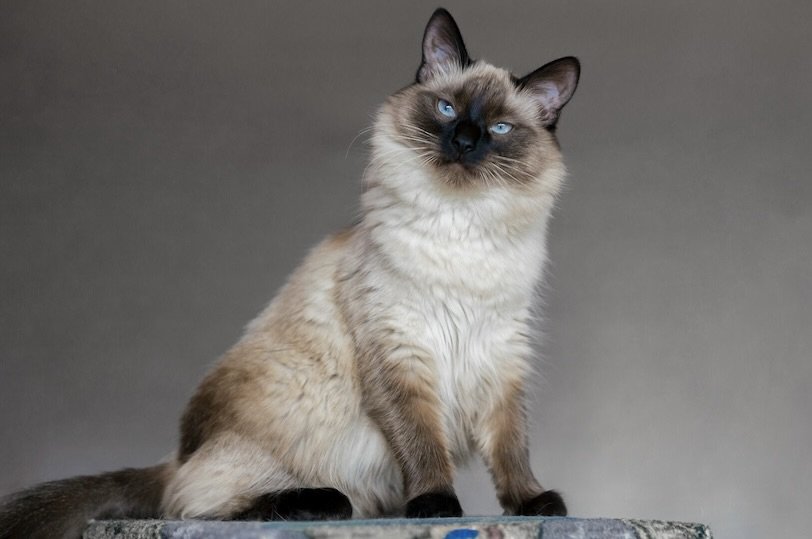


The early history of the Balinese breed is unknown, however, there are rare references of cats with a similar appearance that date back to the early 1880s. Some historians say there is a Chinese tapestry showing a longhaired Siamese and there is also an 1871 Penny Illustrated magazine that holds a reference to a similar-looking cat. Lastly, there was a CFF registration record for a Siamese Long-haired cat. in 1928.
In the 1940s, breeders in the United States found that longhaired kittens were spontaneously showing up occasionally in their pedigree Siamese litters. However, others claim that the Balinese breed is a result of cross-breeding Persians with Siamese cats. Whatever their origin, Balinese cats started to be purposely bred in the 1950s. Marion Dorsey in California and Helen Smith in New York are two Siamese breeders who both fell in love with the longhaired kittens' exquisite appearance so they decided to develop and produce more of them. The original name of ‘Long-haired Siamese’ was rejected by Siamese breeders so Helen Smith coined the name Balinese, to reflect the breeds’ elegance and grace that reminded her of the Balinese dancers.
Balinese cats were initially recognized in four colours; blue, seal, lilac, and chocolate. In 1979, cream, red, and, tabby, were also recognized. Today, recognised Balinese coat colours vary between different organisations, with some only recognising the traditional Siamese colours, and others allowing more colour varieties under the Javanese breed name.
The International Cat Association recognized the Balinese for competition in 1979.

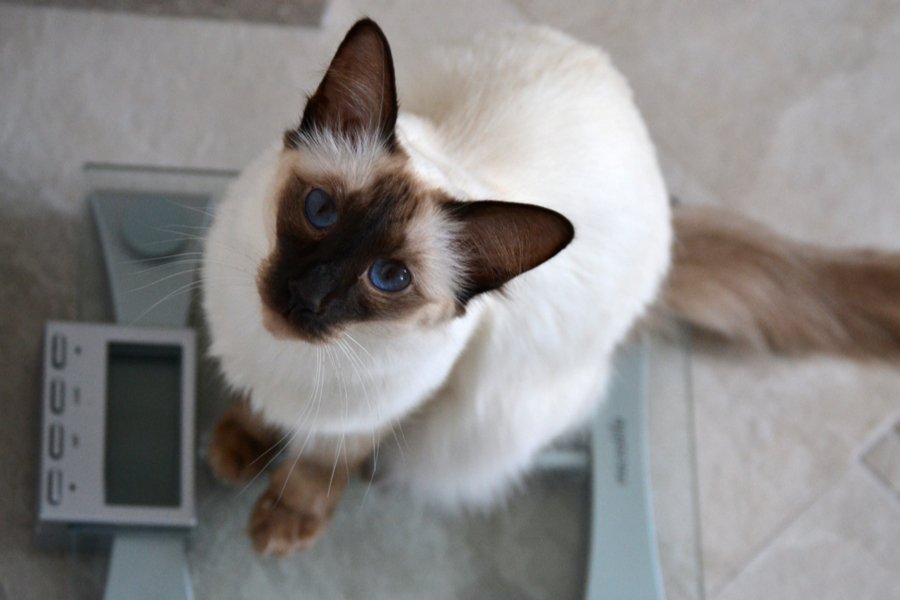
These cats have a single coat of fine hairs that lie close to their long, slender bodies, reducing the risk of matts and tangles compared to other long-haired breeds. The soft, silky coat is fine and smooth, there is no ruff at their neck, and their tails carry a glorious plume. All Balinese cats have striking deep sapphire blue eyes, similar to the Siamese. Their coats come in a wide array of pointed colours and patterns, from the generally known seal point to the uncommon lilac tabby and white point.
Balinese are elegant, graceful cats with long tubular bodies and a fine bone structure. Their heads are long, tapered, and triangular-shaped; flaring out from the nose to the tips of their ears. While refined and elegant, these cats are pure muscle, giving them the feel of silk-covered steel. Balinese cats are a medium-sized breed with females weighing from 2.7-3.6 kilograms and males ranging from 3-4.5 kilograms.
The Siamese and the Balinese cats may vary in coat length, but they are very much the same under their skin. Balinese cats are tremendously affectionate with their families. They enjoy being "helpful" and will follow you from room to room and "supervise" your every move. When you are relaxing and sitting down, they will be in your lap, and at night time, they will be in your bed, probably under the sheets with their head on the pillow! They are often underfoot, so they are perhaps not the best breed for people who have to use a cane or walker to move around.
Balinese cats are not quite as loud as their cousins; the Siamese cats, but they are most certainly just as opinionated. They will tell you precisely what they think, and they expect you to pay attention and act on their instructions! Their voices are a bit softer and quieter than that of Siamese cats but are still known as being an incredibly chatty breed. If you are searching for an interactive and vocal feline companion, the elegant Balinese may be the ideal cat breed for you.
Balinese cats are bright, alert, and athletic. They enjoy playing so you must ensure you keep their busy brains active with puzzle toys, and their body exercised with teaser toys. Cats of this breed love to climb so cat trees and high perches are good investments for this breed. They also love to play fetch and other interactive games with the family. They are willing to walk on a leash and learn tricks effortlessly, however, they should be lead trained from a young age to ensure compliance. Because of their playful personalities and high level of intelligence, you should never leave a Balinese cat without any form of entertainment. If you do, you are likely to return to your home in a very different state to the way you left it!
Keep in mind that the Balinese cat is not ideal for you if continuous noise is likely to drive you a little crazy! Then again, if you love the idea of having a cat to talk to throughout the day, a Balinese cat can be your best friend. Just make sure you have enough time to spend with this energetic and friendly cat. Balinese cats do not mind staying at home during the day while you work, but they will expect you to dedicate quality time to them when you are at home. It is recommended to get two of these cats so they can keep each other company. The dynamic and friendly Balinese is an excellent choice for families with children and cat-friendly dogs.
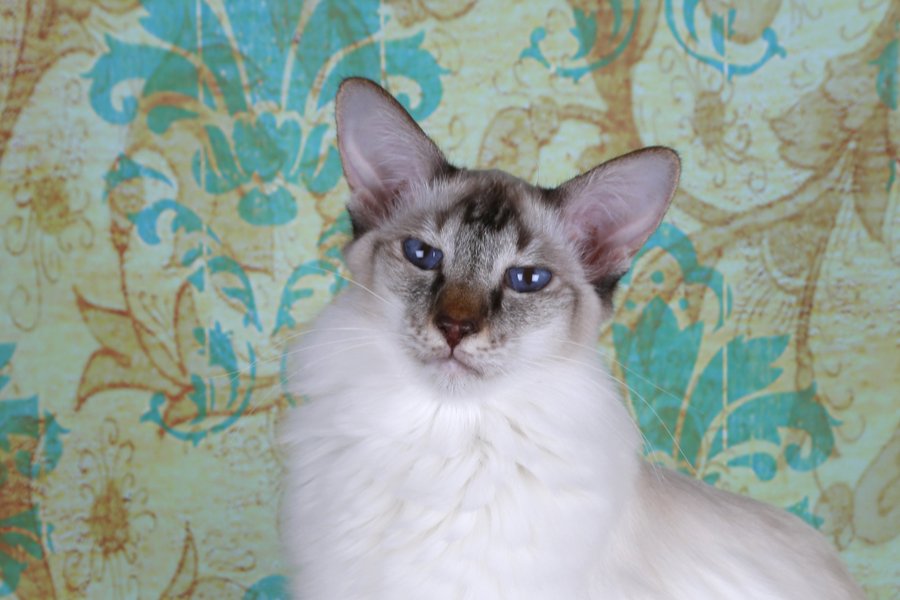
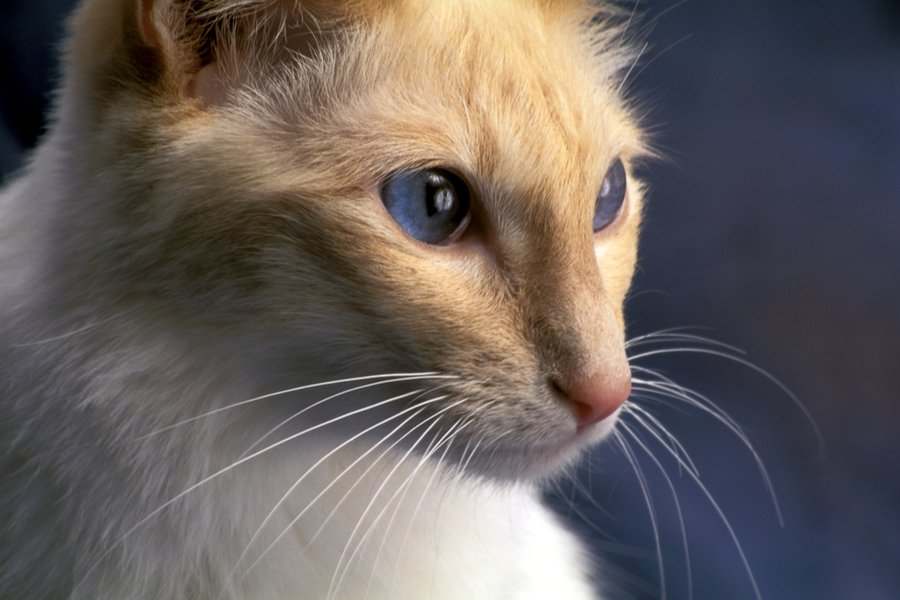
When a Balinese is adequately socialized and trained during kittenhood, it will grow up to be a well-mannered and well-rounded cat. They are very social and loving cats that develop strong bonds with members of the family.
Highly intelligent, lithe, and athletic, there's never a dull moment with this cat breed! They need physical and mental stimulation to keep them occupied. They shine at feline sports agility contests and are very interested in training. This cat can play fetch as well as any retriever and can effortlessly learn to walk on a leash.
Balinese are highly intelligent and adore the love and attention that comes with being clicker-trained. So, challenge your cats' intelligence and keep him attentive by teaching new games and tricks. You can also give these cats puzzle toys that will reward them with treats or kibbles when they learn how to manipulate them.
The single silky coat of Balinese cats makes them easy to maintain and care for. It hardly ever mats or tangles so, a quick brushing or combing once or twice a week will easily remove any loose dead hair while keeping the spectacular plumed tail at its very best. The best type of brush to use for a Balinese cat is a stainless-steel comb. A bath is rarely necessary unless they are particularly muddy or dirty.
Cats must get used to combs and brushes from an early age to avoid matted fur. There's a wide variety of cat combs and brushes available on the market, depending on what works for you and your cat. You can start with a very soft brush that does not pull at fine kitten fur or damage the skin. Each time you have finished brushing, give a small treat. If regular coat care does not cause any issues or problems for you or your cat, you can try more effective combs and brushes when they reach adulthood.
Aside from regular coat brushing, you should also brush their teeth regularly to prevent periodontal disease. Trim their nails twice a month or when needed. For their eyes, wipe their corners with a soft, damp cloth to eliminate any eye discharge. Make sure to use a separate part of the damp cloth for each eye to avoid the risk of spreading any eye infection.
In addition, you should check the ears weekly for wax build-up. If the ears look dirty, wipe them out with a cotton ball or soft damp cloth moistened with a vet-approved ear cleaner. If the ear has a foul odour, it is best to contact your vet for advice.
As with all cats, the litter boxes should always be clean as these cats are very picky about bathroom hygiene. If it is left unclean, Balinese cats may decide to use other places in the house. Even worse, they may get their lush coats dirty which may cause tangles and painful matting.


Balinese cats are known to be generally healthy, compared to many other cat breeds. Their life expectancy is between twelve and twenty years with proper care, exercise, and if they are provided with an age-appropriate and high-quality diet. However, there are health issues that are known to affect the Siamese that may also affect the Balinese. These include:
The energetic and friendly Balinese is ideal for families with children, other cats, and cat-friendly dogs. They will play fetch, learn tricks effortlessly, and adore the attention they receive from children who treat them politely and respectfully.
They can also live peacefully with other cats and dogs who respect their authority. However, as always, it is best to introduce pets gradually and in controlled environments to make sure that they learn to get along well together.


We can connect you with Breeders that are specialized in this particular breed.
See available kittens
Thailand
Size : Medium
Coat : Short
Registration : GCCF, TICA, CFA, FIFe
Vocality : High
Hypoallergenic : Yes
Grooming : Once a Week

United States of America
Size : Medium
Coat : Short
Registration : GCCF, TICA, CFA, FIFe
Vocality : High
Hypoallergenic : Yes
Grooming : Once a Week

United States of America
Size : Medium
Coat : Short
Registration : GCCF, TICA, CFA, FIFe
Vocality : Medium
Hypoallergenic : No
Grooming : Once a Week

Thailand
Size : Medium
Coat : Short
Registration : GCCF, TICA, CFA, FIFe
Vocality : High
Hypoallergenic : No
Grooming : Once a Week


Need some advice?
Whether you're a first time pet owner, an experienced pet owner, a new or long-time breeder, or just curious about pets, we've got you covered!
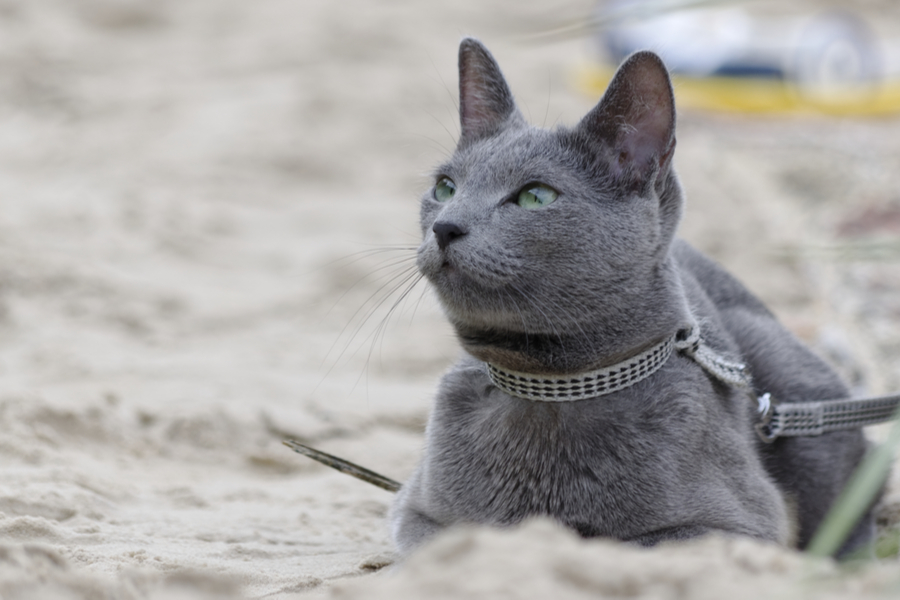
January 17, 2024
What Is The Personality Of Russian Blue Cats?
Russian Blue cats are most known for their distinctive shimmery blue-silver coat and piercing green eyes. However, this breed’s calm and gentle temperament is what makes them shine the most in the feline world.
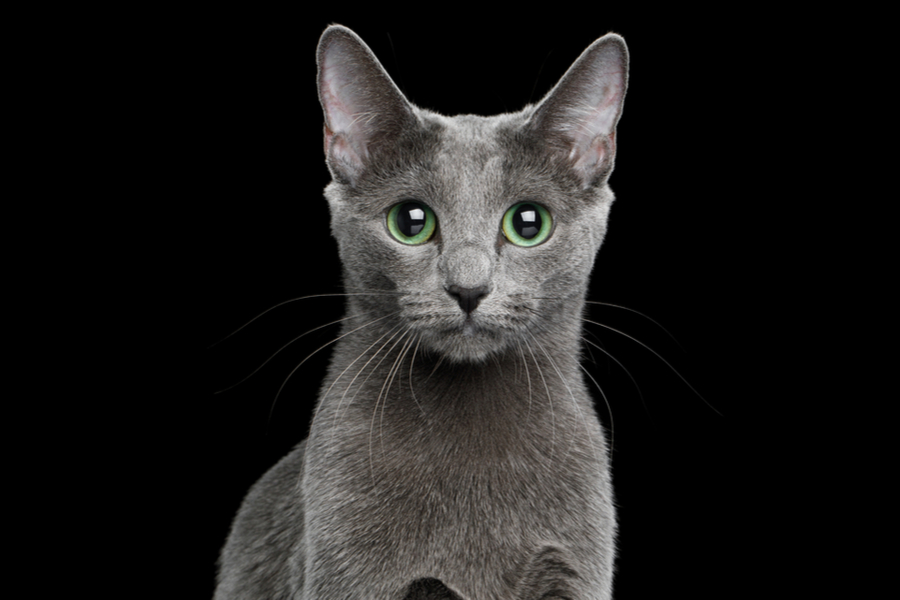
January 17, 2024
10 Facts About Russian Blue Cat Breed
Russian Blues are one of the most aesthetically stunning cat breeds, with a gorgeous plush silvery coat and vibrant green eyes. However, it’s not only their appearance that is beautiful; their nature is too.
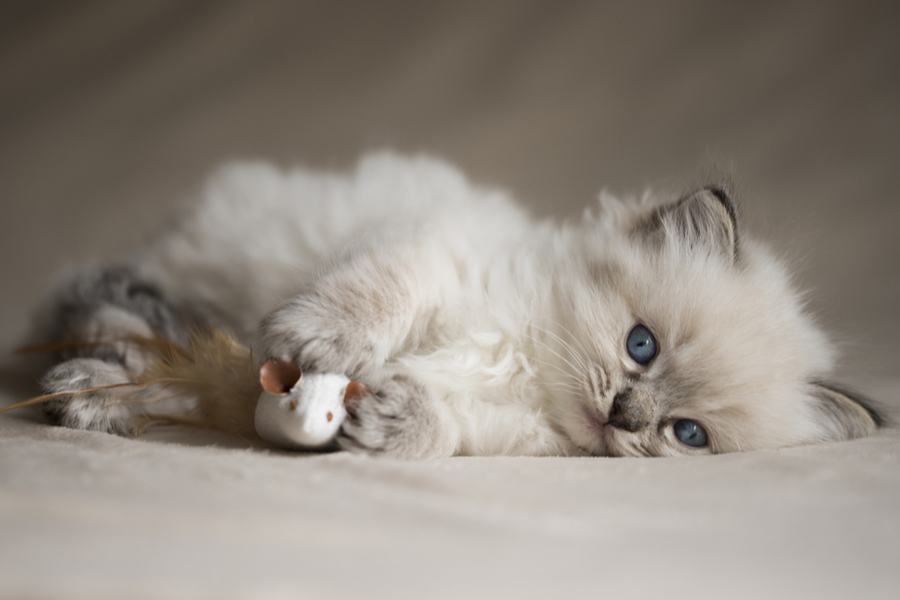
January 17, 2024
How To Choose The Right Cat Breed for You
Cats can make the most fantastic animal companions; they are adorable, friendly, and loving. However, not all felines are created equal. There are many different breeds, of which each has its unique personality traits.
Need some help?
Contact us to speak to our friendly advisor, who will gladly help you find your dream pet!



We are registered in England and Wales under registration number 12568840,
and our registered office is at 58-60 Kensington Church Street, W8 4DB London, England.
© 2023 The Pedigree Paws